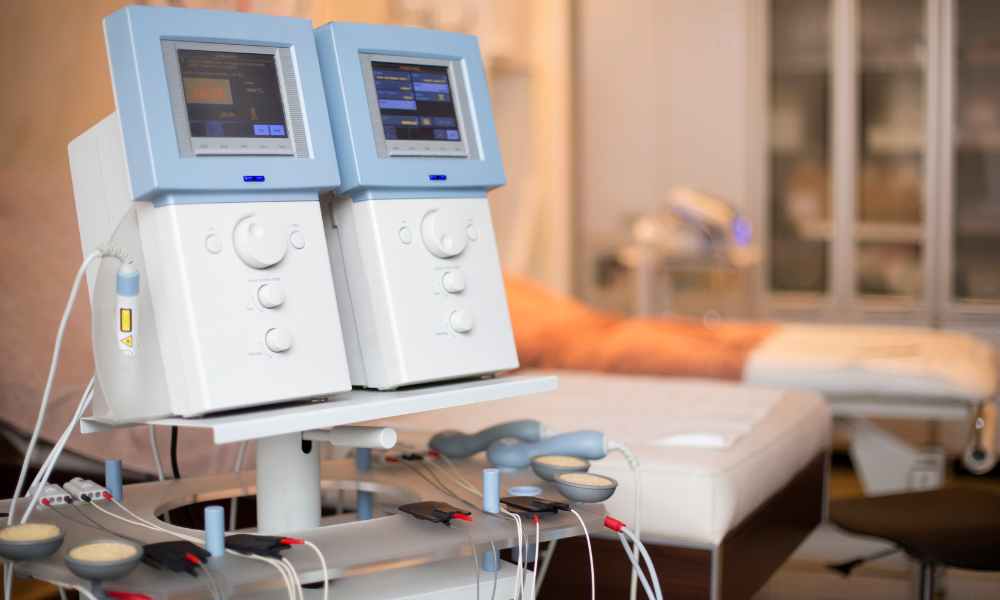Table of Contents
ToggleIn the ever-changing realm of healthcare, technological advancements play a pivotal role in enhancing patient care and treatment outcomes. One of the most significant contributors to this progress is the continuous development of medical devices. These devices, ranging from simple tools to complex machinery, have revolutionized the way healthcare is delivered. In this article, we will explore the landscape of medical devices, highlighting key innovations, challenges, and their impact on the healthcare industry.
I. Introduction
Medical devices encompass a broad spectrum of tools, instruments, machines, and implants designed to diagnose, monitor, treat, or prevent diseases. With the rapid pace of technological innovation, the medical device industry has witnessed remarkable transformations, contributing to improved patient care and enhanced medical practices.
II. Innovations in Medical Devices
A. Integration of Artificial Intelligence (AI)
One of the most groundbreaking advancements in medical devices is the integration of artificial intelligence. AI algorithms are now utilized to analyze vast amounts of patient data, aiding in more accurate diagnostics and treatment plans. Machine learning algorithms, for instance, enable medical devices to adapt and improve their performance over time, offering personalized and precise healthcare solutions.
B. Internet of Things (IoT) in Healthcare
The Internet of Things has revolutionized the connectivity and communication of medical devices. Through interconnected devices, healthcare professionals can remotely monitor patients, collect real-time data, and respond promptly to critical situations. This connectivity enhances patient outcomes, facilitates early intervention, and streamlines healthcare workflows.
C. Wearable Medical Devices
Wearable devices have gained prominence in the healthcare industry, offering continuous monitoring of vital signs and health metrics. From smartwatches that monitor heart rate to wearable patches that track glucose levels, these devices empower individuals to actively participate in their healthcare and provide healthcare professionals with valuable data for better-informed decision-making.
D. 3D Printing Technology
Advancements in 3D printing have transformed the manufacturing of medical devices. This technology allows for the creation of customized implants, prosthetics, and anatomical models. 3D printing not only increases the precision of medical devices but also reduces production costs, making healthcare more accessible and personalized.
III. Challenges in the Medical Device Industry
A. Regulatory Compliance and Approval
The medical device industry operates within a stringent regulatory framework to ensure the safety and efficacy of these devices. Navigating the complex regulatory landscape and obtaining approvals can be time-consuming and costly, hindering the rapid deployment of innovative technologies. Striking a balance between innovation and regulatory compliance remains a challenge for manufacturers.
B. Cybersecurity Concerns
As medical devices become more interconnected, the risk of cybersecurity threats increases. Hacking attempts on healthcare systems and medical devices can have severe consequences, compromising patient data and even endangering lives. Addressing cybersecurity challenges is crucial to ensuring the integrity and safety of medical devices.
C. Data Privacy and Ethics
The vast amount of patient data generated by medical devices raises concerns about data privacy and ethical considerations. Protecting sensitive health information and establishing clear ethical guidelines for the collection and use of data are essential to maintaining public trust and ensuring the responsible development and deployment of medical devices.
IV. The Impact on Healthcare
A. Improved Patient Outcomes
The integration of innovative medical devices has significantly improved patient outcomes. From early disease detection to personalized treatment plans, these devices contribute to more effective and efficient healthcare delivery. Remote monitoring capabilities also enable healthcare providers to intervene promptly, reducing hospitalization rates and improving overall patient well-being.
B. Cost-Efficiency and Accessibility
Despite the challenges, advancements in medical devices have the potential to drive cost efficiencies in healthcare. 3D printing, for example, reduces manufacturing costs, making customized medical devices more accessible. Telehealth solutions, enabled by connected medical devices, offer cost-effective alternatives for remote patient monitoring and consultations.
C. Shifting Healthcare Paradigm
The evolution of medical devices is reshaping the traditional healthcare paradigm. Patients are increasingly becoming active participants in their healthcare journeys, empowered by wearable devices and health apps. Healthcare providers are adopting a more proactive and preventive approach, leveraging technology to deliver personalized and patient-centered care.
V. Future Perspectives
As we look to the future, the landscape of medical devices will continue to evolve. Emerging technologies such as nanotechnology, robotics, and bioelectronics hold the promise of further revolutionizing healthcare. The collaboration between the medical device industry, healthcare professionals, and regulatory bodies will be crucial in navigating the challenges and unlocking the full potential of these innovations.
VI. Conclusion
The constant evolution of medical devices is a testament to the commitment of the healthcare industry to improve patient outcomes and enhance the quality of care. From the integration of artificial intelligence to the widespread adoption of wearable devices, these innovations are shaping a future where healthcare is not just reactive but proactive and personalized. While challenges persist, the transformative impact of medical devices on the healthcare landscape cannot be overstated, paving the way for a new era of patient-centric, technologically driven healthcare.




